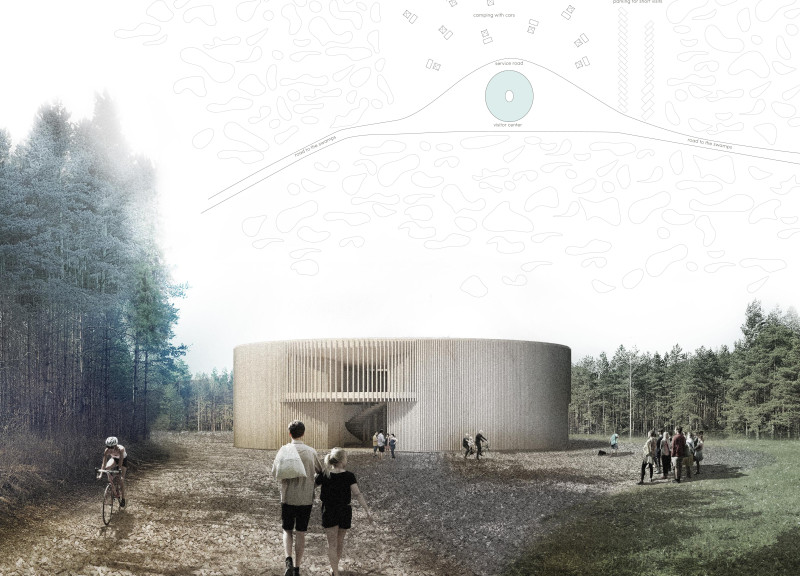5 key facts about this project
The KEMERI BOG VISITOR CENTER is situated within the unique landscape of Kemeri National Park. It serves as a point of entry for visitors looking to explore the natural environment. The design encourages an immersive experience, drawing attention to the transition from built spaces to the surrounding wilderness. The overall concept focuses on facilitating this movement through thoughtful organization and clear pathways.
Central Design Concept
The design is anchored by a timber walkway that leads visitors into the swampland, symbolizing a journey deeper into nature. This path opens into a clearing that acts as an entry point, allowing guests to pause and prepare for their exploration. By providing a moment to leave personal items behind, the clearing invites reflection and sets the tone for a respectful engagement with the park's ecosystem.
Spatial Organization
An elliptic water pool takes center stage in the building's layout, organizing the surrounding spaces. This central feature encourages movement and interaction throughout the center, creating a flow that guides visitors naturally. Surrounding the pool, three enclosed areas and three openings direct the visitor experience, offering spaces for rest, information, and further exploration. The design promotes a dynamic relationship with the environment, allowing for different ways to engage with the site.
Architectural Language
The building's form reflects the surrounding forest, creating a structure that is both defined and in harmony with its environment. Structural elements such as beams and supports radiate from the water pool, emphasizing its importance in the design. The choice of elements integrates the built environment with the natural landscape, achieved through careful consideration of scale and rhythm.
Materiality and Function
Glued-laminated timber serves as the primary material, connecting the structure to traditional Latvian wooden architecture. This choice adds structural strength while creating a warm and inviting atmosphere. The design also incorporates essential facilities, including restrooms, a ticket office, a café, and open-air exhibition spaces, enhancing the visitor experience and promoting a deeper appreciation for the surroundings.
The design culminates in a relationship between the visitor center and its natural setting, where the water pool serves as a practical feature and a focal point for contemplation. This approach ensures that the experience within the building resonates with the surrounding landscape.


























